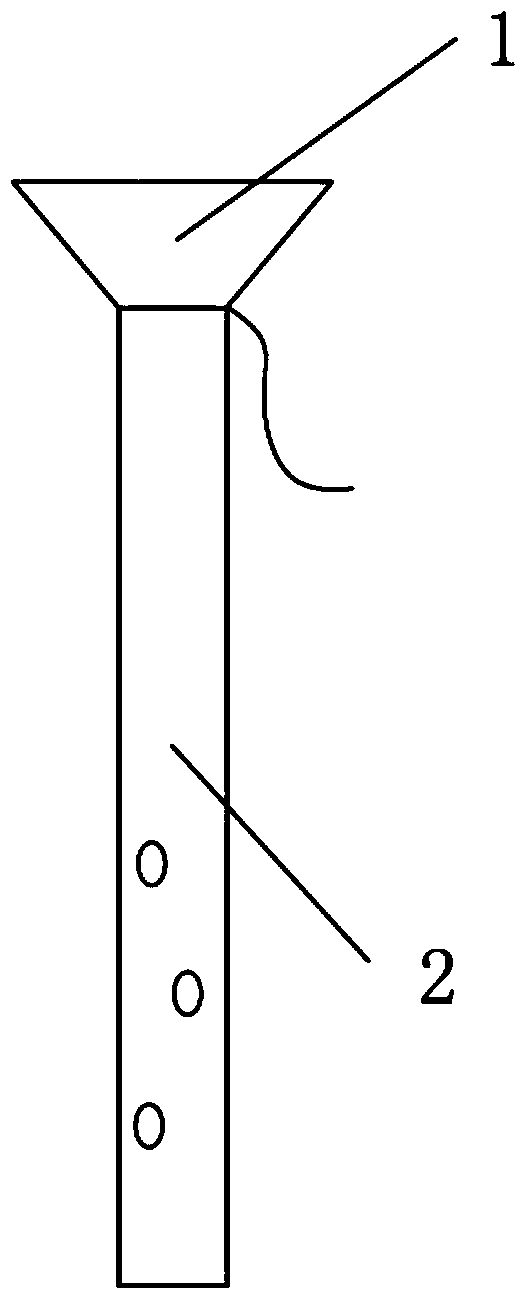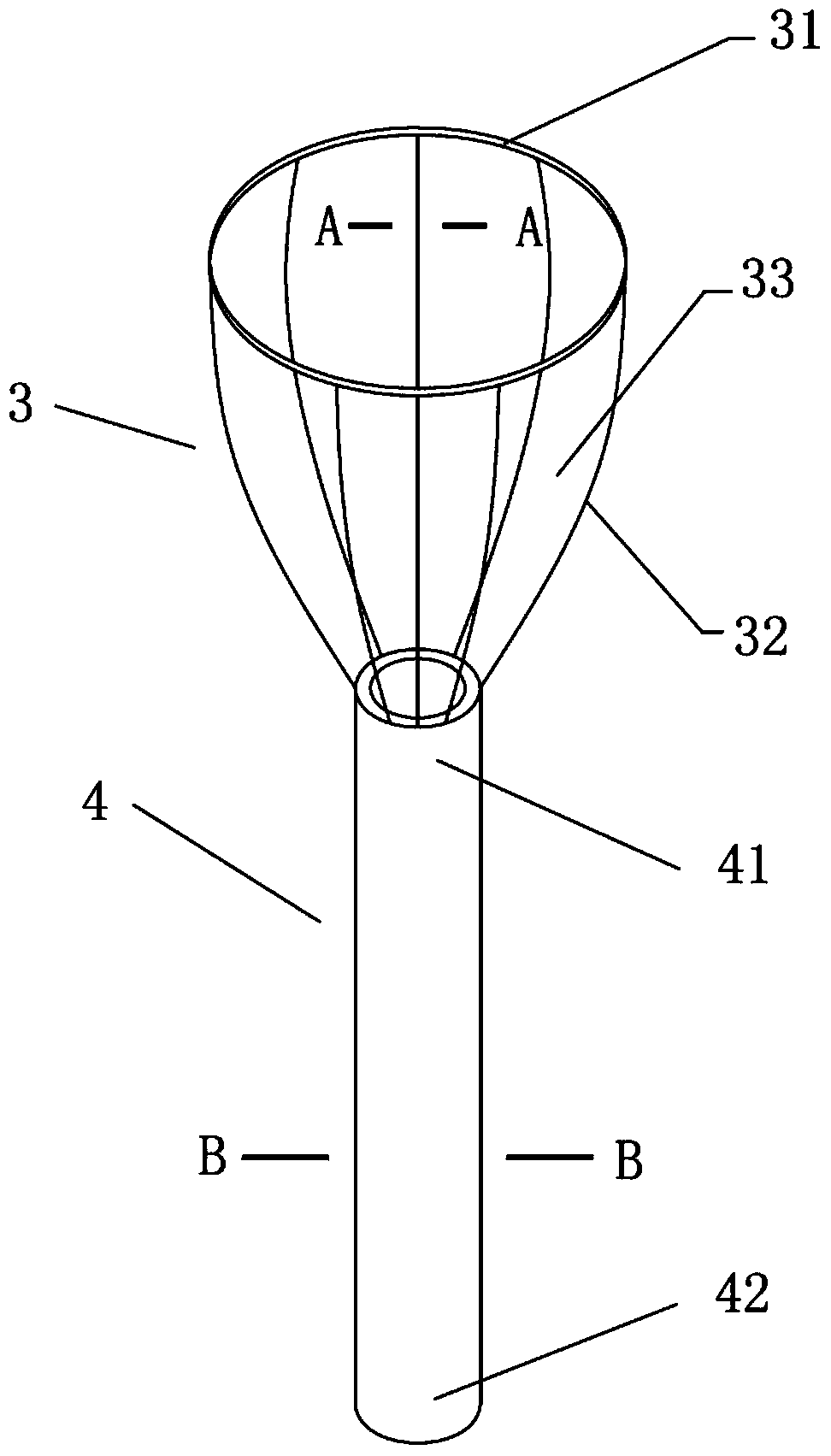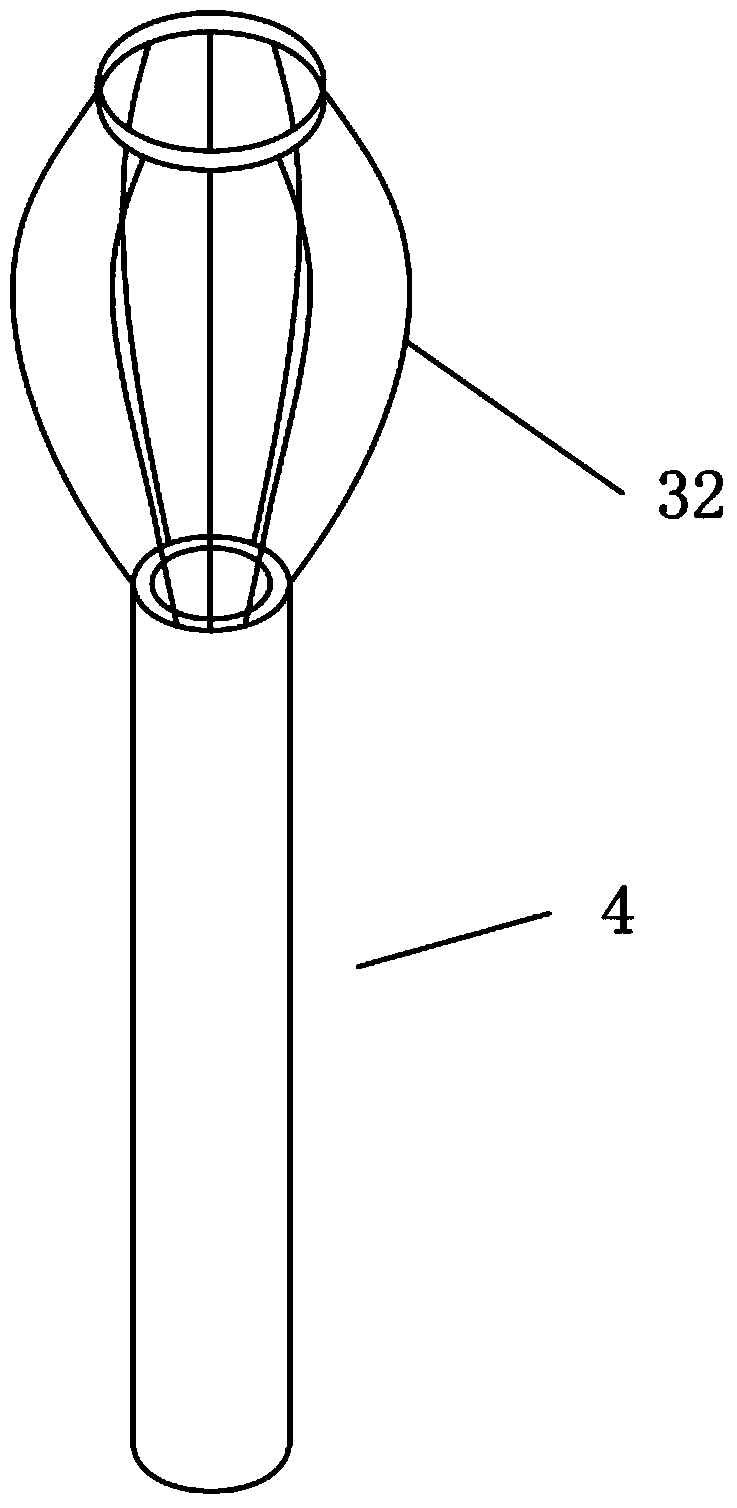Catheter for lacrimal passage
A technology for placing tubes and lacrimal ducts, applied in ophthalmic surgery, etc., can solve problems such as nasal mucosa irritation, difficulty in lacrimal duct implantation, and strong discomfort
- Summary
- Abstract
- Description
- Claims
- Application Information
AI Technical Summary
Problems solved by technology
Method used
Image
Examples
Embodiment Construction
[0019] In order to understand the technical content of the present invention more clearly, the following embodiments are given for detailed description.
[0020] The lacrimal duct cannula includes a lacrimal sac portion 3 and a nasolacrimal duct 4. The lacrimal sac portion 3 is located at the upper end of the nasolacrimal duct 4. The lacrimal sac portion 3 includes at least three elastic wires 32. The lower end of the elastic wires 32 is connected to the nasolacrimal duct. The upper end of 2 is fixedly connected, the upper end of the elastic wire 32 is fixedly connected with the fixing ring 31, and the elastic wire 32 is distributed along the circumferential direction of the fixing ring 31, and the inner space formed by the elastic wire 32 and the fixing ring 31 is the lacrimal sac portion 3, A drainage gap 33 is formed between the elastic wire 32 and the adjacent elastic wire 32; the elastic wire 32 is arc-shaped, the elastic wire 32 is a metal wire 5, and the surface of the e...
PUM
 Login to View More
Login to View More Abstract
Description
Claims
Application Information
 Login to View More
Login to View More - R&D
- Intellectual Property
- Life Sciences
- Materials
- Tech Scout
- Unparalleled Data Quality
- Higher Quality Content
- 60% Fewer Hallucinations
Browse by: Latest US Patents, China's latest patents, Technical Efficacy Thesaurus, Application Domain, Technology Topic, Popular Technical Reports.
© 2025 PatSnap. All rights reserved.Legal|Privacy policy|Modern Slavery Act Transparency Statement|Sitemap|About US| Contact US: help@patsnap.com



